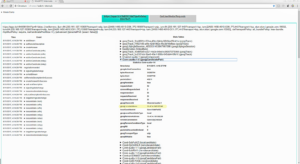We have have had many posts on Session Description Protocol (SDP) here at werbrtcHacks. Why? Because it is often the most confusing yet critical aspects of WebRTC. It has also been among the most controversial. Earlier in WebRTC debates over SDP lead the to the development of the parallel ORTC standard which is now largely merging back into the […]
How to capture & replay WebRTC video streams with video_replay (Stian Selnes)
Decoding video when there is packet loss is not an easy task. Recent Chrome versions have been plagued by video corruption issues related to a new video jitter buffer introduced in Chrome 58. These issues are hard to debug since they occur only when certain packets are lost. To combat these issues, webrtc.org has a […]
WebRTC Externals – the cross-browser WebRTC debug extension
I am a big fan of Chrome’s webrtc-internals tool. It is one of the most useful debugging tools for WebRTC and when it was added to Chrome back in 2012 it made my life a lot easier. I even wrote a lengthy series of blog post together with Tsahi Levent-Levi describing how to use it […]
Reeling in Safari on WebRTC – A Closer Look at What’s Supported
Long have WebRTC developers waited for the day Apple would come around to WebRTC. It has not been simple for web developers and Apple due to their policy that requires web browsing functionality to use the WebKit engine along with Safari. This meant no WebRTC in Safari; no Firefox or Chrome WebRTC on iOS, no native […]
Am I behind a Symmetric NAT?
WebRTC establishes peer-to-peer connections between web browsers. To do that, it uses a set of techniques known as Interactive Connectivity Establishment or ICE. ICE allows clients behind certain types of routers that perform Network Address Translation, or NAT, to establish direct connections. (See the WebRTC glossary entry for a good introduction.) One of the first problems is […]






